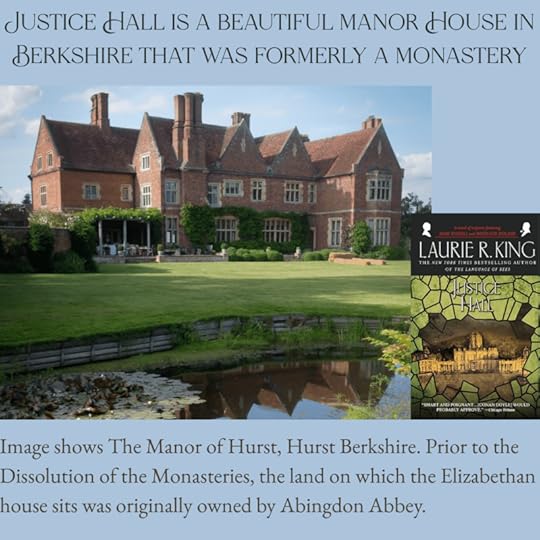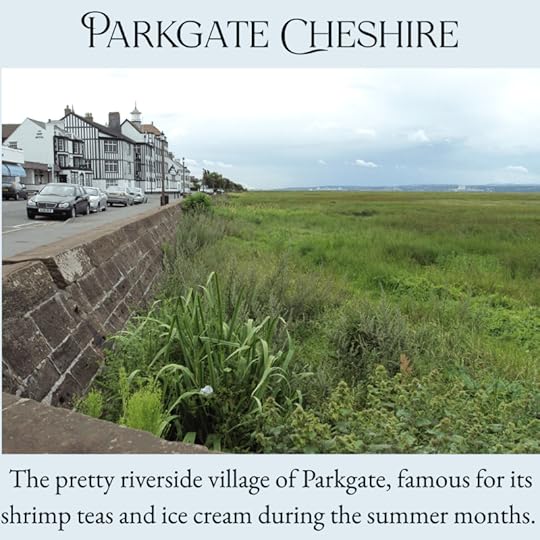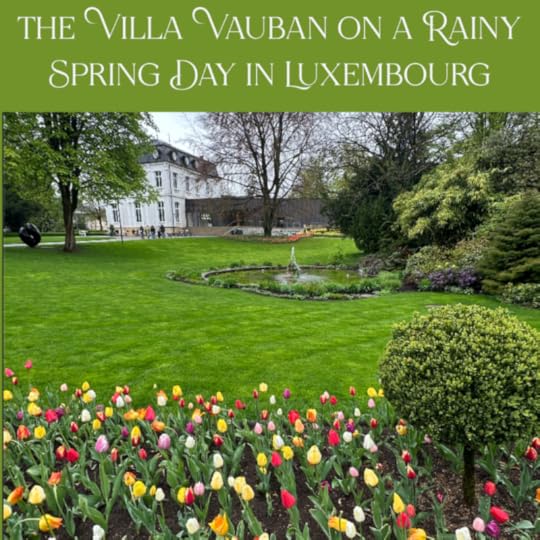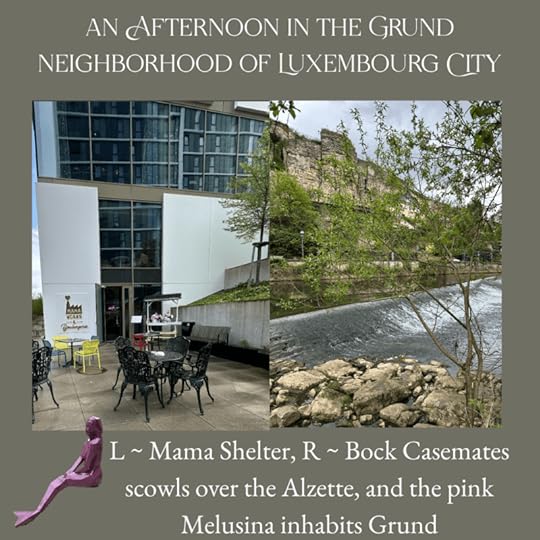Cynthia Sally Haggard's Blog: Cynthia Sally's Blog, page 2
October 31, 2025
THE LOST PASSENGER by France Quinn
Poor Eleanor is so naive. Aged 19, when this novel opens, she loves nothing more than reading novels, especially those with a Cinderella-ish flavor to them. When she is not immersed in her favorite pastime, she dreams of finding love and romance in her own life.
Enter Frederick Coombs, the son and heir of an Earldom. He is kind, charming, and has wonderful manners. He takes the time to talk to shy Eleanor at a party, drawing her out. She likes hiim. He comes to tea. He returns for more tea. Even her father, a shrewd man used to hard bargaining, is charmed by this handsome young man. In no time at all he pops the question. Naturally Eleanor is thrilled .And so they marry, dear reader.
If this were a Jane Austen novel, the story would end there. But what happens next is chilling. For Eleanor is subjected to abusive behavior on the part of her mother-in-law and husband. These charming people have rather strange beliefs. They do not think a mother should spend much time with her child. Instead, they believe that the child should be brought up by a nanny, who has managed to impress a duchess or two. When Eleanor, still recovering from the birth of her son, realizes that she is only going to be allowed to spend twenty mintues a day with him and becomes distraught, everyone, including the doctor, threatens her with the prospect of being locked up as a sure tonic for her “madness.”
Terrified, Eleanor makes herself conform the the strictures of this aristocratic British family. Imagine her dismay when her husband informs her that their son will leave the family home at the age of seven to be educated at a private boardiing school as a preparation for Eton. What is Eleanor going to do? She has so little time left to spend with her son.
Fortunately, her father, a rich businessman, decides to treat her with tickets on board the Titanic. Eleanor is thrilled as it means that she sees it as an opportunity to spend time with her son. For her father’s tickets are just for herself and her husband, her son and two servants. Of course she has to work very hard to convince her reluctant husband and domineering mother-in-law that her son Teddy will be traveling with her to New York (and back) without the nanny. But somehow, she manages to do that.
Of course, everyone knows what happens to the Titanic. Because Eleanor and her party are in first-class, they are offered the life-boats first. However, the men have to stay behind until those first boats are filled with women and children.
And so, Eleanor becomes a widow.
Not long after Teddy was born, Eleanor was coerced into signing a document that stated that in the event of Frederick’s death, Frederick’s parents (not Eleanor) would become Teddy’s guardians. And so Eleanor hatches a desperate plan to take on the identity of the young woman who acted as Teddy’s nanny aboard the Titanic. All she knows about this woman is that she disappeared into the bowels of the Titanic to fetch her savings, that her name was Molly Morton, and that she had relatives waiting for her in New York.
If you are wondering whether this story about the strange goings-on in the British aristocracy could be true, you only have to look at the experiences of the Empress Elisabeth (Sissi) of Austria (1837-1898), who had a similarly domineering mother-in-law who took away her three eldest children before handing them off to paid staff to look after them.. Such traumatizing experiences probably contributed to the mental health issues that Sissi suffered from all her life.
It is also true that aristocratic young men had been leaving their families of origin at the ages of seven or eight for around a thousand years. These young boys were sent to another aristocratic household to learn their fighting skills from the lord of the manor, and their manners from his lady. For example, the young Richard III (1452-1483) was sent away from his mother at the age of eight to train in the household of his cousin Richard Earl of Warwick (1429-1471), in 1460, shortly after his father died.
Although a similar story is told in the the 1997 movie TITANIC, I highly recommend this novel as author Frances Quinn has told a compelling story about the mores of the British aristocacy, a brave bid to escape a the cruelties of an aristocratic gilded cage, and how the protagonist Eleanor/Molly finally makes peace with her past.
 The post THE LOST PASSENGER by France Quinn appeared first on Cynthia Sally Haggard.
The post THE LOST PASSENGER by France Quinn appeared first on Cynthia Sally Haggard.
October 27, 2025
Travel Day from Wallasey to Manchester Airport
Today was a travel day, in which I extracted myself from Wallasey, where I was visiting relatives, and took myself to the Ibis Hotel at Manchester Airport for an early flight tomorrow.
I programmed the onboard GPS of the rental car to take me to the Ibis Budget Hotel at Manchester Airport by giving it the alphanumberic postal code. I was following the map on the car screen and listening to the Disembodied Voice, when all of a sudden, I found myself at the entrance to the Wallasey Tunnel, paying £2.30. I made myself stay calm, while I searched my memory. Of course there was a highway that would take you from Liverpool to Manchester Airport, but I had assumed that I was going to go south down the Wirral Peninsula. Apparently, the Disembodied Voice had other ideas. Of course, it took me the way I hate to drive, as I really don’t enjoy driving through downtown Liverpool, partly because it looks rough, and partly because I don’t know where I am, or where I’m going. Not having a lot of choice, I just kept following signs to Manchester Airport. Eventually, we got onto the M62, and the route took us to the M6, and then the M56 to the airport.
After driving around a couple of times, I found the Ibis Budget Motel. It is hard to see from the road as it is behind the Holiday Inn. In any event, I showed up at around 1:40 and they checked me in immediately. (I had called ahead of time, telling them I would be early.) I unloaded the car, got everything up into the hotel room, returned to the car, and drove to the Car Rental Village to return it to Alamo. The signs here were very confusing, but a cheery girl stopped me, and I told her I was trying to return the car. She looked it over, said it was in excellent condition, said I would get my £200 pound deposit back and we parted company.
I waited around 10 minutes for the bus to show up, which took me to Terminal 2. Then I had to find a way of walking back to the hotel. Of course there were no signs telling you how to walk from Terminal 2 to Ibis Budget. Indeed, I found myself walking through a parking lot. Eventually, I did find my way back, got into my room and collapsed.
The room was teeny-tiny but well-designed. And the shower was big enough for me to wash my hair, so that is what I did before spending a pleasant evening knitting, eating my snacks, and watching various BBC programs (including one of the Spey River in Scotland, that looks lovely.)
Tomorrow I will be up bright and early to get on that first morning flight to Heathrow!
 The post Travel Day from Wallasey to Manchester Airport appeared first on Cynthia Sally Haggard.
The post Travel Day from Wallasey to Manchester Airport appeared first on Cynthia Sally Haggard.
October 24, 2025
JUSTICE HALL ~ MARY RUSSELL & SHERLOCK HOLMES #6~ by Laurie R. King
To most Americans, the title sounds like a Supreme Court Justice, so we are surprised to discover that Justice Hall actually refers to a house in England. Formerly a monastery, Justice Hall has been the seat of the Dukes of Beauville for the past four hundred years.
Before I begin talking about this wonderful book, I should warn the reader not to skip the previous volume titled O JERUSALEM. Although this volume (Number 5 in the Russell & Holmes series) is out of sequence, beiing set in 1919 when Mary Russell was still Holmes apprentice, rather than in 1923 which is when Volume Number 4 THE MOOR is set, you will not appreciate JUSTICE HALL (Number 6 in the series, set in 1923) unless you read O JERUSALEM. This is because the main characters in O JERUSALEM ~ Mahmoud Hazr and his brother Ali ~ are transformed into Marsh (Lord Maurice Hughenfort, Duke of Beauville) and Alistair John Hughenfort, his cousin.
What is wonderful about this novel is a piece of injustice so grave and so devastating that the Hughenfort family is without an heir. It turns out that Marsh had a son named Gabriel, who was born in 1899. As neither Marsh, nor the boy’s mother (Iris Sutherland) felt able to take care of a baby, he was adopted by Marsh’s elder brother Henry, the sixth Duke of Beauville. And so Gabriel grew up, not realizing that his parents were actually his uncle and aunt, while the people he referred to as Uncle Marsh and Aunt Iris were actually his parents.
Of course there is a Latin motto for the Hughenfort family ~ Justicia fortitudo mea est, which translates as Justice is My Strength. Naturally, the Hughenforts are trained to have a bone-deep regard, perhaps even reverence, for justice.
And so, when 18-year-old Gabriel Hughenfort, a second lieutenant in the British Army on the Western Front druing World War I, is given an insane instruction that would have meant the almost-certain death of his men, he refuses.
Because of the chaos of war in 1918, because so many men were killed that regiments had to be constantly remade, with soldiers were being sent here there and everywhere to regiments full of people who did not know them, it is just possible that the story of what happens next has a kernel of truth to it. For instead of punishing Hughenfort with a court martial, or stripping him of his rank, his commanding officer decides to make an example of him by having him executed. His men (who love him) are forced to turn their pistols on him and shoot him in the chest, one morning at dawn. All of them hope that it is their pistol that has the blank in it.
Gabriel’s death is devastating for his family. The Duke’s wife Sarah, who acted as Gabriel’s mother dies shortly thereafter. A few years later, in 1923, the Duke himself dies. This puts Marsh/Mahmoud in a predicament. For he is next in line, and slated to become the seventh Duke of Beauville. But, as mentioned before, Marsh, under his nom-de-guerre Mahmoud, has been living in Palestine for the past twenty years with his cousin Ali, acting as a translator and scribe for the Palestinian and Bedouin communities who live in what is now Israel. They also act as spies for the British Government, providing valuable information about the goings-on in that part of the world. Their disguise is so convincing they even speak English with Arabic accents. Marsh/Mahmoud loves this life, but finds himself trapped in England as he is obliged to take up his responsibilities as Duke.
And so, one dark and stormy night, Ali knocks on Holmes door, soon after the conclusion of THE MOOR to ask for help. He wants Holmes and his now-wife Mary Russell to persuade Marsh to return to Palestine. But in order to do that, Holmes and Russell have to find a suitable heir to take Marsh’s place. Their search takes them to France (Paris and Lyon), London, and even Canada.
I don’t think you will be disappointed by this novel, with its plot twists and turns and its startling character transformations.
 The post JUSTICE HALL ~ MARY RUSSELL & SHERLOCK HOLMES #6~ by Laurie R. King appeared first on Cynthia Sally Haggard.
The post JUSTICE HALL ~ MARY RUSSELL & SHERLOCK HOLMES #6~ by Laurie R. King appeared first on Cynthia Sally Haggard.
October 20, 2025
A Showery Saturday in Parkgate, Cheshire
I was warned that places would be swarming with people this Easter Weekend, and so I decided to scrap my plans to visit Southport or Walton Hall & Gardens near Warrington, and instead confine myself to the Wirral Peninsula, where my relatives live.
I decided to find that pretty country road that takes you south along the Peninsula. First I had to program the inbuilt GPS system in the car so that it would take me the right way, which means for me, not on the motorway. I put in the postcode for Hoylake, which meant that it took me to Leasowe and Moreton. Once I was sure I was on the right road, I programmed it for Parkgate, but oh dear! That Bossy British Female Voice was very unhappy that I didn’t want to go on the motorway. However, I follwed the signs to Hoylake, West Kirby, Heswall and so on down to Parkgate, and eventually she subsided. Because I’d programmed the Post Code for The Boathouse (a restaurant/pub that had been recommended to me), my Disembodied Voice took me down a lane (Boathouse Lane) where I’d never been before. At the bottom, The Boathouse loomed up on the right, so I turned right into the car park. There were plenty of spaces and no-one around. I checked my watch. It was 10:00 am.
After making sure I’d parked the car properly, I got out to walk around.
Parkgate at 10:00 in the morning on a Saturday is a rather lonely place. Apart from the inevitable dog-walkers, no-one was out. It was raining and blowing, making it virtually certain that the residents of this riverside village in Cheshire would be snug in their cottages drinking copious amounts of tea. How glad I was for my puff-jacket with its warm hood! I walked away from The Boathouse, my back facing it, and along the “sea front.” Actually, you can’t see the Dee River from the front, because in between is an enormous marsh, wonderful for birds and bird-watchinig. So I walked down the street, hoping to find some snacks to feed myself on Monday night, when I would be staying at that budget Ibis Hotel, which had no room service, but something called a “bottle bar.” And I also wanted to buy some chocolate to supplement the sandwiches I’d been eating as an evening snack.
The first place I happened upon was a pop-up bakery, that happens every Saturday. A cheerful young man explained all his wares. He had several savory pastries and pies, and some sweet stuff. After that, I spied Nicholls, famous for its ice-cream in these parts. The young woman there was very happy to tell me that the dairy milk bar I picked up had only chocolate in it. In a fit of naughtiness, bought four of them.
I glanced at my watch to see that it was only 10:20, and so I followed The Parade to the very end. There, it turns left into Station Road. I walked a few feet up this road and peered ahead, but could see nothing interesting, so I turned back. At Coastguard’s Lane, I turned right and walked all the way to the end, where my way was blocked by a bridge and a gate. Now that I can look at it on a map, I see that it is a trail called The Wirral Way. On the right hand side was a school, called Parkgate Primary School. It reminded me of the various primary schools I’d attended in Britain with my sister.
Turning around, I walked back to The Parade, turned right and walked back to The Boathouse. By this time, it was nearly 11:00 am, so I tried the doors only to find they were all locked. I was a bit surprised because their website had stated they would open at 9:30.
I got back into my car, found the number and called.
A cheery female voice answered.
“Are you open today?” I enquired.
“Indeed we are!” she replied.
“What time will you open?” I asked.
There was a long pause.
I repeated the question.
“We open at noon!” she finally declared.
“Good,” I said. “I’ll be there then. Byyyye.” And I ended the call.
When I arrived on the dot of noon, there was no-one there except myself and about three waitresses. But all of them were very friendly Perhaps they were happy to see their first customer! I ordered grilled fish, a glass of apple cider and a glass of tap water. As there was no-one else there, they’d sat me at a very nice table that commanded a view of the Welsh Hills. After that, I asked for espresso. Instead the waitress offered me a coffee dessert. It was a small brownie with one scoop of vanilla ice cream, and came with espresso.
It was perfect.
 The post A Showery Saturday in Parkgate, Cheshire appeared first on Cynthia Sally Haggard.
The post A Showery Saturday in Parkgate, Cheshire appeared first on Cynthia Sally Haggard.
October 17, 2025
A DANGEROUS PLACE ~ MAISIE DOBBS #11 ~ by Jacqueline Winspear
I’ve enjoyed getting to know Maisie Dobbs over the past eleven books. I still remember how blown away I was by the first book in the series, in which we met a young maid of thirteen who read books in the dead of night so that she could improve her education!
Clearly Maisie is remarkable, and as the series has gone along, I’ve enjoyed seeing her friendships with Billy Beale, Priscilla Partridge and Maurice Blanche play out. Recently, author Jacqueline Winspear out-did herself with two Maisie Dobbs novels ~ ELEGY FOR EDDIE and LEAVING EVERYTHING MOST LOVED ~ by writing about two people who were different. In Eddie’s case, he was a so-called simple man, who, in fact had great gifts. In the case of Usha Pramal, a young woman from the Indian subcontinent trying to make a life for herself in the UK, it was the issues of race and gender. In both books, Jacqueline Winspear’s pen overflowed with empathy for these two people who both met untimely deaths.
But in the most recent Maisie Dobss novel I’ve read, A DANGEROUS PLACE, I began to take a dislike to Maisie for the first time ever. Of course, what happened to Maisie at the beginning of the volume was devastating, and it is a wonder that she is able to function at all after losing both a beloved husband and her unborn child. But there was something about the way she kept pestering the sister of the dead man, whose murder is the main top of this book.
Sebastian Babayoff is a talented photographer whom Maisie discovers sprawled on a path, lifeless. Most people would take the next ship home, leaving Gibraltar for England as soon as possible. But (of course) Maisie is not like that. She suspects that things are not what they seem, and begins an informal investigation into Sebastian’s death. Of course, she discovers that Sebastian left two sisters ~ Miriam, a seamstress (and a talented photographer in her own right) and her sick sister Channa. Miriam, bereft, is now solely responsible for her sister, and is struggling to make ends meet (which is why she takes in mending.)
But I must say I found the way in which Maisie treats Miriam really put me off. She pesters her with all sorts of questions about Sebastian, including what it felt like to view his dead body in the morgue. I understand that Maisie is suffering, but it just seemed so selfish of her to keep rubbing Miriam’s face in the open wound of her grief for her brother.
I am planning to pick up the next book in the series, JOURNEY TO MUNICH, and I am hoping that Maisie is a lot more sensitive in her questioning of bereaved people in the next volume.
 The post A DANGEROUS PLACE ~ MAISIE DOBBS #11 ~ by Jacqueline Winspear appeared first on Cynthia Sally Haggard.
The post A DANGEROUS PLACE ~ MAISIE DOBBS #11 ~ by Jacqueline Winspear appeared first on Cynthia Sally Haggard.
October 13, 2025
Villa Vauban, Haute Ville, Luxembourg City
On my last day in Luxembourg, I decided to visit the Villa Vauban, located in the charming Haute Ville. The 1873 villa owes its name to a fort built on that site by the Marquis de Vauban in 1684. The seige of Luxembourg was part of a series of wars launched by Louis XIV in the latter part of the seventeenth century, to establish defensible boundaries in the northern and eastern parts of France.
The day I visited, the rain was tumbling down from the heavens, just as it had for the previous two days. Apparently (according to a Luxembourgish matron) it rains more here than it does in England! When I challenged her on this statement (I am, after all, English) she told me that she’d spent some time working in England as a young woman, in the hotel trade. And that she’d noticed that while the weather blows past you in England, due to those strong Atlantic gales, in Luxembourg, the clouds stay put, pouring a considerable amount of water upon you before, fiiinally, sloooowly moving on.
So there you have it. The weather is definitely worse in Luxembourg than it is in England!
 The post Villa Vauban, Haute Ville, Luxembourg City appeared first on Cynthia Sally Haggard.
The post Villa Vauban, Haute Ville, Luxembourg City appeared first on Cynthia Sally Haggard.
October 10, 2025
THE SWIFT & THE HARRIER by Minette Walters
I read THE SWIFT AND THE HARRIER second, so am reviewing it after reading THE PLAYERS, the second novel set in Dorset in the 1600s about the same family.
While THE PLAYERS is set in the 1680s, starting just after the death of Charles II on 6 February 1685, THE SWIFT AND THE HARRIER occurs around forty years earlier, in the 1640s, during the English Civil War.
Jayne Swift, a young woman of some twenty-six years, is hurrying into Dorchester because her female cousin has summoned her urgently. It turns out that Mistress Jayne is a doctor, which is a very unusual occupation for a woman in 17th-century England. Needless to say, on the very day when she must hurry to her cousin, the streets of Dorchester are absolutely jammed with people, on their way to see the execution of two Catholic priests. Along the way, Jayne takes shelter in a doorway, and when that door is opened sets eyes on a woman who is just as remarkable as herself. For Lady Alice Stickland is a painter, who specializes in portraits. Naturaly, she cannot possibly take credit for her talent, and so found a way of practicing her art by persuading an actor to act the part of the painter, while she sat in the shadows and actually painted the portrait herself.
Lady Alice takes a liking to Jayne, and suggests that her footman William escort her to her cousin’s house. Unfortunately, their journey takes them by the gallows and so the reader is “treated” to an extremely gruesome account of hanging, drawing and quartering. This part of the book is really not for the faint hearted, so I advise those of you who are sensitive to such matters to just skip over it, as the rest of the novel is really a treat.
When William finally deposits Jayne at her cousin’s house, we find that all the people within are on their knees in prayer in a darkened house with the windows closed. They are all terrified of Rachel’s husband, who has imposed Draconian Puritanical measures on his household, because he says they will help his dying son.
The two-year-old son, Isaac is suffering from croup, and Jayne immediately countermands the husband’s orders in order to save his life. She insists on having the windows opened, cauldrons of water boiled, and towels brought so that she can drape scented hot towels over herself and the child to ease his breathing. Realizing that the father is enjoying himself egging on the executioners, Jayne knows that she has a couple of hours at most to effect real changes in her cousin’s life.
And that is how THE SWIFT AND THE HARRIER opens. Jayne not only saves Isaac’s life, but she rescues her cousin from an abusive marriage.
So we know that Jayne Swift is the Swift of the title. But who is the Harrier? It turns out to be footman William, who is not really a footman at all, but rather posing as one. And that is how the two novels are tied together, for while THE PLAYERS opens with Jayne and William’s son Elias pretending to be a clergyman, THE SWIFT AND THE HARRIER opens with William pretending to be a footman.
Although more than one reader described this novel as too dry for enjoyment, I disagree. It probably helps to be a history buff, as I am. But I thought the characters of Jayne’s parents, her three brothers and the various people she met during the siege of Lyme were beautifully drawn. I have never heard of Minette Walters before, but I am now going to read some of her earlier books.
 The post THE SWIFT & THE HARRIER by Minette Walters appeared first on Cynthia Sally Haggard.
The post THE SWIFT & THE HARRIER by Minette Walters appeared first on Cynthia Sally Haggard.
October 3, 2025
THE ANGLO-SAXONS ~ A History of the Beginnings of England: 410 to 1066 by Marc Morris
In 400 CE, the Roman Empire was coming to an end in Britain. It was pulling back its military. Coins were not being minted. And ships stopped sailing across the channel.
In around 430 CE, the Anglo-Saxons began coming to England. As author Marc Morris points out, the term Anglo-Saxon does not mean that Britain was just invaded by people from Saxony and Angeln in Germany. Nor does it mean that it was just the Jutes from Jutland in Denmark who came. No. It means that people from Scandinavia and Germany flooded into England from around 430 on, taking advantage of the chaos surrounding the sudden collapse of the Roman Empire in England.
That was bad enough, but in the mid-sixth century, things became even worse. Apparently, a volcano in Iceland erupted three times in 536, 540 and 547, creating massive dust veils that swept over England. The effect of this was to create the coldest decade Britain has ever seen in two thousand years. Because the rays of the sun were so much weaker during this decade, there was massive crop failure leading to large-scale starvation.
What must it have been like for the people of England in around 550 CE, shortly after this horrendous decade? I imagine they were thrown into complete panic. As they wouldn’t have known anything about volcanoes in Iceland or the resultant dust veils that occur when a volcano goes off, they probably told themselves that the gods were angry with them. If they had nothing, or very little, and were completely ruined, they probably left their homes and took to the road.
If, on the other hand, you were one of those lucky people who had a farm that actually functioned, and enough acreage so it was easier for you to deal with bad harvests, your biggest problem would have been the spike in robberies. For the people on the road (the have-nots) would be breaking into the properties and holdings of people who had something. I imagine there must have been pitched battles going on between these two sets of people, with the property holders going to the local strong-man, askiing for protection in the form or armed guards around their properties.
In my mind, this was a protection racket, not unlike the mafia. The reason why I say that is because the payment for this protection was extortionate. It would have been one thing if the local strong man had asked for only a few things, or “whatever you can afford.” But they did not. They basically asked for a pound of flesh.
Here is a list of what the owner of one hide had to give the local strong man as a yearly payment. (A hide is enough land to feed one family.)
1 vat of honey
30 loaves of bread
1 container of Welsh ale
3 containers of clear ale
1 goat
1 goose
1 hen
1 wheel of cheese
1 container of butter
1 salmon
2 pounds of fodder
10 eels
If you were literally hanging on by your fingernails, one step away from total ruin, starvation, and disease, would you have been able to afford all this? I can imagine the local strongman coming up with this deliberately extortionate list, because if the person failed to pay, that meant they had to give up both their liberty and their land. Sure, the King agreed to protect them from armed robbers. But, in return, they faced a life of indentured servitude.
Historians now believe that this is how the Kings of England emerged in this period from around 550 to 600 CE. In the beginning, there were probably a score of kingdoms, that finally became whittled down to just seven ~ Northumbria, Mercia, Wessex, Essex, East Anglia, Sussex, and Kent.
If you have always wondered how England emerged from the collapse of the Roman Empire, this book is for you. It provides a fascinating account of Anglo-Saxon Society from its formation in around 430 CE to the Norman Conquest of 1066 CE.
 The post THE ANGLO-SAXONS ~ A History of the Beginnings of England: 410 to 1066 by Marc Morris appeared first on Cynthia Sally Haggard.
The post THE ANGLO-SAXONS ~ A History of the Beginnings of England: 410 to 1066 by Marc Morris appeared first on Cynthia Sally Haggard.
September 29, 2025
A rainy afternoon in the Grund neighborhood of Luxembourg City
Today, I decided to go to a really great bakery that was mentioned online. The one I chose is called MAMA according to those reviews, but its actually a complex of things that might include a shelter, a commune and a bakery. It’s called Mama’s Shelter on Google Maps.
And so I walked to the Place de Paris and took the tram in the direction of Luxexpo, and got off at MUDAM in the Kirschberg area. It was very easy to find. Once I got there I discovered that they not only had great bakery items but also sandwiches! Am going back tomorrow morning to buy 1/2 sandwich, a pastry and another Napolitan.
After that, I took the tram to Hamilius and had an early lunch at La Brasserie, arriving by 11:30. This time, I had the a la carte menu, but it was marvelous. Gazpacho done the Spanish way (with a wide black straw), a Quiche Lorraine and salad (and french fries, which I ignored.) I ended the meal with one sccop of caramel ice cream.
Because I had that wonderful pastry with me, I walked back to Hotel Perrin to leave it safely inside my room. Just as I arrived, the housekeeper arrived to do my room, so I waited the ten minutes it took her to do it.
Then I walked to the station (Gare Centrale) found Quai 1 and got on bus number 14 in the direction of Cents, Waassertuerm to take me to Grund, the low-lying area of Luxembourg City, right by the Alzette river.. I got off at Dinselpuert, because that’s where Google maps told me to get off. However, I was very far up from Grund, so walked down the hill, the way the bus had come. Soon I heard the sound of running water, and leaning over, discovered a path that led down to the Alzette.
Of course I shouldn’t have done this as the path was way too steep for me, and it didn’t help that it had been partly washed out during a recent storm. But once I got down to the river, I could see the Bock Casemates by looking up. I took some photos, and tried to orient myself to where the violet statue of Melusina was. Naturally, I walked the wrong way. But once I discovered that, I walked back and enjoyed walking along the bank opposite the statue, until I was stopped by roadworks.
So I crossed the old bridge, and found myself climbing up and onto a road that was going to take me up to the Bock Casemates. Peering back at where I’d come from, I discovered I’d missed a bunch of stairs leading down to the bank of the Alzette, on the other side from the old church.
I made my way back there, and voila! found myself next to Melusina. Now I had to find a way out and then get a bus as it was beginning to rain. I walked straight to the “main road” (a cobbled street) and spied a bus stop opposite marked Stadgronn Breck, and indeed there was an old bridge nearby over a charming stream. However, by this time it was pouring rain, and this bus stop was not in service due to road works. I took a photo of the path of the 23 bus, which should have stopped there and decided that if I followed the road over the bridge, and kept following it, I would find the bus stop at Rumm, which the bus had used earlier.
So, with only a flimsy umbrella for covering, I walked over the bridge, turned left and made my way along the road, avoiding cul-de-sacs. At one fork the road narrowed as it turned right, while the wider left fork seemed to go to a main road. I walked left and soon saw a bus in the distance. Wonderful! I found two bus stops across from each other and met a group of women (I think a mother and at least one daughter and possibly a school friend) and I asked if any of them spoke English. I told them I wanted to go to the station, and the young teen quickly found out that I should use Bus 14. I looked at the schedule and yes, it did go to the Gare Centrale. Then I finally saw the sign of the bus-stop. I had made it to Rumm.
It took about ten minutes for the bus to arrive, but when it did we all piled on. Somehow I found a seat and was able to sit comfortably for the ten or fifteen minutes it took the bus driver to get us to the Gare Centrale. By that time, the rain had stopped, so all I had to do was to walk back to the hotel.
What a day! I hadn’t planned much, but I had seen a lot.
 The post A rainy afternoon in the Grund neighborhood of Luxembourg City appeared first on Cynthia Sally Haggard.
The post A rainy afternoon in the Grund neighborhood of Luxembourg City appeared first on Cynthia Sally Haggard.
September 26, 2025
THE PLAYERS by Minette Walters
THE PLAYERS by Minette Walters is so cleverly told. The first chapter,opening in April 1685, is told by a narrator, referred to as The Watcher. This person is clearly a British spy who spends hours watching the house in The Hague where the Duke of Monmouth – Charles II’s illiegitimate son – is living. When, finally, he meets Monmouth, he is greeted as a friend. It turns out that both men know each other well as they fought together some six years earlier in the 1679 Battle of Bothwell Bridge. But now, King Charles II is dead, and his eldest son Monmouth is planning to go to England to claim the throne.
The second chapter takes places several months later, in July 1685, just after the Battle of Sedgemoor, in which Monmouth’s rag-tag army is defeated by forces loyal to James II, Charles II’s younger brother who is now King of England. Monmouth tries to hide in a ditch that runs beside a pea field. But he is discovered at dawn the next day. Just as he is found, a mysterious parson appears, who is able to converse (in an understone) with Monmouth in Dutch, which turns out to be Monmouth’s native tongue as he spent his childhood and formative years in the Netherlands. The parson tries to help Monmouth, even hinting that he is just an impoverished serf. However, Monmouth spoils everything by admitting that he is, in fact Monmouth, with a bounty on his head for £5,000 (an enormous fortune in 1685.) After the local magistrate rules that he is in fact who he says he is (Monmouth famously bore a striking resemblance to his father Charles II) he is hustled off to the Tower of London, where he is executed several days later.
In the third chapter, we learn that The Watcher, is the same person as The Parson, and that he is actually the Duke of Granville, a local grandee in Dorset, where this novel is set. Anyone who grew up in Britain, probably had a history class of The Bloody Assizes of Judge Jeffreys. My history teacher had no trouble expressing her disdain for Jeffreys, and the horrifying punishment he meted out of hanging, drawing, and quartering. I haven’t thought of this for years, and I must say I appreciated Ms. Walter’s more even-handed approach to Jeffreys. She points out that Jeffreys was bound by his oath to King James II and was forced to flollow his instructions. Ms. Walters places the blame for the horrifying events of te autumn of 1685 at James II’s feet, and shows how his vindictiveness eventually led to him being kicked off the throne of England three years later.
And then there are such wonderful characters. In this novel, we have three main characters ~ the intriguing Duke of Granville, who is an expert spy., his mother, the incredible healer Lady Harrier, and the woman who becomes his wife, the brilliant lawyer Miss Althea. It is so wonderful to read about vivid female characters who imbue this tale with so much vivacity. If Granville himself were not so brilliant at disguises and deception, he would be boring by comparison. But of course he is not. I have never heard of this author before, but I now consider THE PLAYERS to be a gem of a novel!
 The post THE PLAYERS by Minette Walters appeared first on Cynthia Sally Haggard.
The post THE PLAYERS by Minette Walters appeared first on Cynthia Sally Haggard.
Cynthia Sally's Blog
- Cynthia Sally Haggard's profile
- 129 followers



